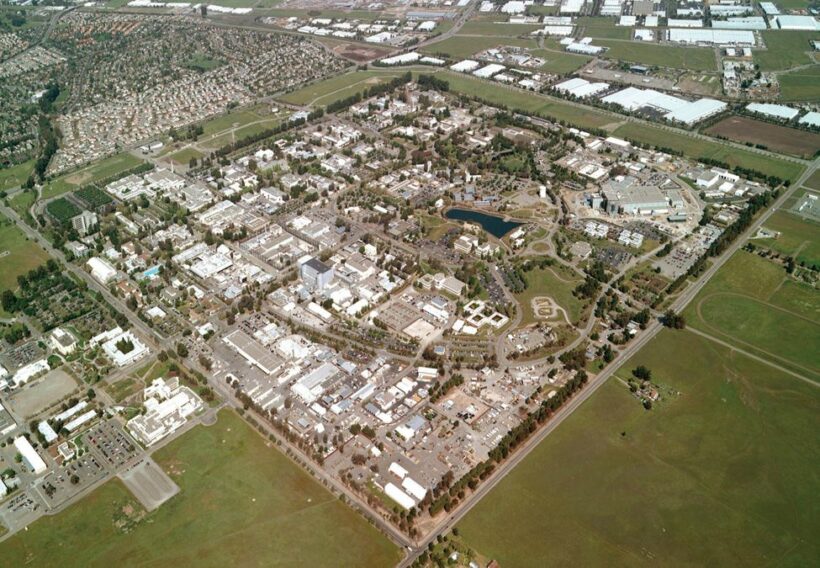By Angelo Baracca and Giorgio Ferrari.
An international press campaign is currently underway celebrating the results of work carried out in the United States in the field of controlled nuclear fusion; a dream (a promise) pursued since the early days of nuclear technology in the 1940s-1950s. Periodically every decade it was announced that a breakthrough would be near. But today this pompous announcement requires many clarifications and distinctions, which inevitably escape those who are unfamiliar with such things.
Put simply, nuclear fusion of light nuclei (as opposed to the fission [splitting] of heavy nuclei) requires heating a plasma, typically of deuterium and tritium, to millions of degrees so that the kinetic energy of the nuclei overcome the electrical repulsion barrier. Nuclear fusion reactions were performed as early as 1949, but in an explosive way, namely in thermonuclear bombs in which a primary fission device generates the temperature necessary to trigger a secondary fusion device. Since that time, research has begun to achieve nuclear fusion in a controlled (non-explosive) way for peaceful purposes, research that today focuses on two very different methods: magnetic confinement of a “plasma” obtained by fusing deuterium and tritium in large machines of the ITER type under construction in France, and inertial confinement, concentrating on very small grains (pellets, typically of quantities between 1 milligram and 1 microgram) composed again of deuterium and tritium employing enormous energies, typically from superlasers. Now, civilian and military interests are intertwined in this research: an influential article almost 50 years old (R. Gillette, “Laser fusion: an energy option, but weapons simulation comes first,” Science, 1975) made it clear that “weapons simulation may be the only practical application of laser fusion in this century. … Maj. Gen. Edward B. Giller, head of national security in the Energy Research and Development Administration, said in a recent conversation, ‘People are going around saying this is an energy program, but […] actually this is and always has been a military program.’”
The experiment was performed at Lawrence Livermore National Laboratories, where the NIF (National Ignition Facility) project was launched in 1997 with the goal of achieving fusion between deuterium and tritium atoms by means of lasers. The equipment used fills the size of a soccer field and includes 192 lasers employed simultaneously. Mark Herrmann, director of the Nuclear Weapons Physics and Design Program at Livermore, said in an interview quoted in the New York Times, “This experiment will help us better understand the effects of nuclear bombs because the large power generation obtained, in itself creates very extreme environments that closely resemble those caused by a nuclear weapon.”
So, contrary to the media reports, the overriding purpose of the entire NIF project is military, so much so that it was conceived in the aftermath of the ban on underground nuclear tests-voted by the UN General Assembly in 1996, but never ratified by the U.S.-specifically to nondestructively obtain information resulting from those tests, a purpose Gillette explicitly envisioned in 1975: “Laser fusion can become an extraordinarily useful experimental tool for studying the ‘fundamental physics of warheads’ [which still have many obscure aspects] and … for developing new weapons designs.”
As for the so-called “energy gain” obtained in the experiment, it should not be understood as the possibility of obtaining more energy than was expended in the entire process. It refers only to the ratio of the laser energy pulse needed to fuse the hydrogen atoms to the energy obtained from this fusion, but to generate that pulse, the lasers used consumed 150 times more energy than that provided by the pulse and 100 times more energy than that obtained from the fusion. Moreover, one must consider that NIF technology – unlike ITER technology, i.e., based on a self-sustaining reaction (plasma) – is based on the possibility of causing fusion by “firing” single pulses of laser energy (one shot) on a pellet, which cannot self-sustain, and thus to give rise to a continuous process of energy generation one would have to make a machine capable of “firing” pulses of energy at a rate of several times per second on different pellets, which at the moment is technologically even more difficult than the magnetic confinement of plasma.
In short, the triumphalist result obtained at Livermore is not, at least for now and in intention, a step towards the promise of producing unlimited energy, but rather as step forwards to design weapons, perhaps micro-fusion bombs, whether it can then also be used to proceed to peaceful energy production is, however, yet to be seen.
But if the media do not report on these aspects, they are not really providing useful and transparent information for the public, and end up covering up military research.










